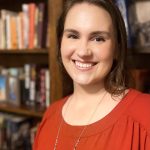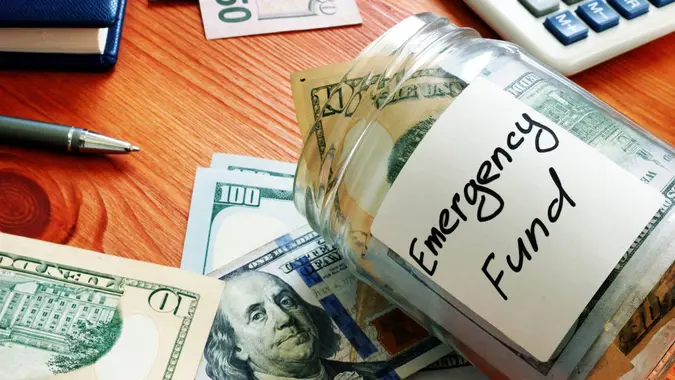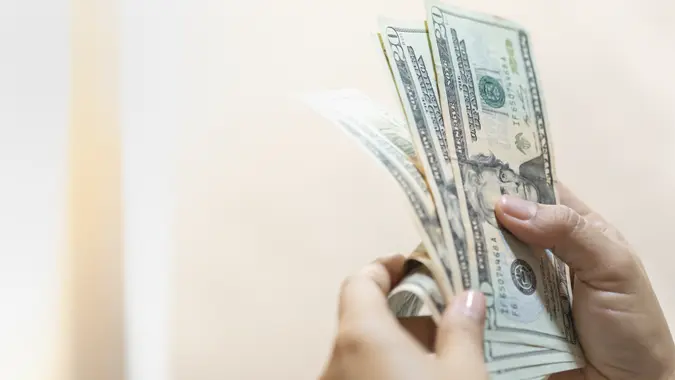Tori Dunlap: Ignore Dave Ramsey’s Advice About Emergency Funds, and Do This Instead

Commitment to Our Readers
GOBankingRates' editorial team is committed to bringing you unbiased reviews and information. We use data-driven methodologies to evaluate financial products and services - our reviews and ratings are not influenced by advertisers. You can read more about our editorial guidelines and our products and services review methodology.

20 Years
Helping You Live Richer

Reviewed
by Experts

Trusted by
Millions of Readers
Just because someone is a financial expert doesn’t mean their advice is right for you. It’s okay to scratch your head — or even shake it — at some of their insights. You can even reject some of their opinions outright, and the world will not end. Many well-known financial experts feel the same way about other big names in the field.
Take Tori Dunlap. The author of “Financial Feminist” and entrepreneur behind Her First 100K is, to put it mildly, not exactly a fan of Dave Ramsey’s advice. Dunlap and Ramsey are certainly on opposite ends of the political spectrum, and Dunlap has made no bones about her bone to pick with the gruff tone Ramsey sometimes takes with his guests.
However, her biggest concern is with the viability of some of his advice, especially for marginalized people. While she acknowledges that Ramsey’s advice has helped many, she offers insights to help those who don’t quite connect with his methods.
Ramsey’s Baseline Is Not Enough
Dunlap finds merit in the first of Ramsey’s famous Baby Steps — building a $1,000 emergency fund — but she’s quick to point out that $1,000 isn’t enough to address a real emergency.
In a post on Her First 100K, she wrote that she appreciates Ramsey’s attempt to find a number that feels achievable to Americans who typically don’t even have $600 on hand to deal with an emergency.
However, $1,000 is, frankly, not enough to cover most emergencies. “When an emergency that costs more than $1000 comes up, you’ll be reaching for your credit cards again to cover the cost. We don’t want you going deeper into debt trying to pay for an emergency,” she wrote.
How To Build a Better Emergency Fund
Rather than just sock away $1,000 in a savings account — where it will essentially sit and do absolutely nothing for you — Dunlap wants you to start with a high-yield savings account. She suggests building a three-month emergency fund that could cover your non-negotiable expenses, keeping it in a high-yield savings account that can grow your money over time while it sits there.
Financially, your goal is to have between three to six months of living expenses saved in case you face a catastrophic event, such as a job loss.
Smarter Budgeting for Your Emergency Fund
For Dunlap, the “put $1,000 away and forget it” approach is flawed because it fails to account for how to handle dipping into your fund. Years ago, when Dunlap used her own emergency fund to escape a toxic workplace, she developed an approach for replenishing it that is easy enough for everyday people to follow.
She cut back on eating out — not in a punitive way, but by making the few times she dined out per month feel more special. Dunlap also took on short-term freelance projects and learned how to live on a portion of her income. Additionally, she set clear financial boundaries by telling the people in her life she was getting more intentional about her spending.
Dunlap also got creative with cashback cards: “When I quit my job, I started using my cashback cards as my everyday choice, and I continued that while I built my savings back up,” she wrote. “While I often let my rewards pile up, I immediately put those cashback dollars into my emergency fund.”
Whether you’re a traditionalist in the vein of Ramsey or prefer a more modern approach like Dunlap, the key to your financial success is finding advice that works for your situation.
More From GOBankingRates
 Written by
Written by  Edited by
Edited by 
























